Waves behave differently than particles in several ways.
Reflection
Waves change direction when they meet a boundary in their medium.
For example, water waves reflect off the edge of a pool.
Light waves also reflect on a smooth surface such as a mirror.
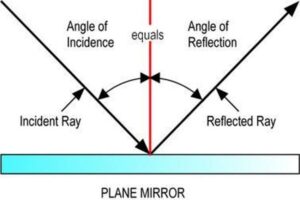
Refraction
Waves change their direction when they enter a medium with a different wave speed, such as light entering glass or water from air.
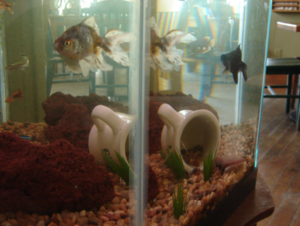
The fish above appears to be in two different places because the light from the same source is bending at different angles before it reaches the camera.
Water waves can also refract if they enter shallower water, which can cause an increase in wave speed. In order for the wave crests (bright lines in the picture) to stay lined up after the speed changes (lines are closer together), the wave has to bend as shown below. (If the didn’t stay lined up, that would imply some sort of strange teleportation behavior.)
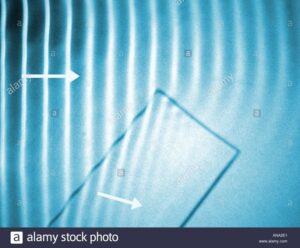
(A glass plate placed in the ripple tank above creates a shallower region where water waves must move faster in order for the same volume of water to flow past.)
Diffraction
When waves pass through the opening in a barrier, they form a curved pattern on the other side. Waves can also form part of this pattern when they go past the edge of a barrier.
This can be easily observed with water waves. In the simulation diagram below, water waves are flowing from the bottom toward a gap in a barrier. The waves coming out of the barrier form a round wave pattern.
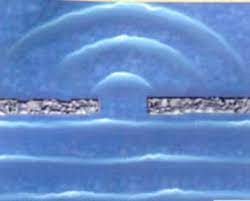
Light also diffracts if you force it to pass through a narrow slit or allow it to reflect off an edge.
Interference
When waves meet, they pass through each other. This is quite different than particle behavior: particles bounce backwards when they collide.
When waves occupy the same space as they pass through each other, this is called superposition.
Interference can be constructive or destructive.
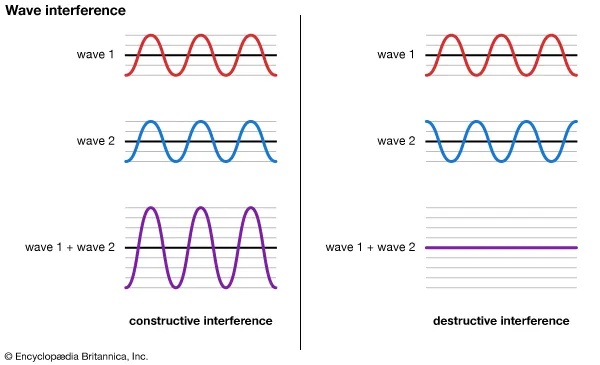
Constructive Interference
When wave crests are superimposed and both crests are in the same direction, they add together to form a bigger crest with a larger amplitude. This is constructive interference.
Destructive Interference
When wave crests with opposite directions are superimposed, they cancel each other out at least partially, resulting in a smaller combined wave crest. This is destructive interference.
Interference Patterns
When many wave crests and peaks pass through each other, this causes interesting patterns of alternating high and low amplitudes. The high amplitude areas show constructive interference, while the low amplitude areas show destructive interference.
The diagram below shows two sets of circular waves in water. They can be made by poking the surface of the water at two points at a regular frequency. The circular waves pass through each other, and you can see a circular checkered pattern.
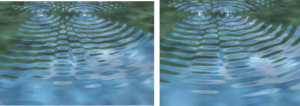
The straight lines cutting through the waves like a spider web are low amplitude areas where the water particles aren’t moving very much. These are areas of destructive interference between the waves.